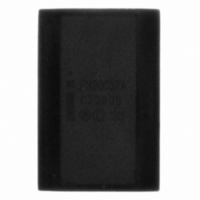GT28F320C3TA110 Intel, GT28F320C3TA110 Datasheet - Page 28

GT28F320C3TA110
Manufacturer Part Number
GT28F320C3TA110
Description
IC FLASH 32MBIT 110NS 47MBGA
Manufacturer
Intel
Specifications of GT28F320C3TA110
Rohs Status
RoHS non-compliant
Format - Memory
FLASH
Memory Type
Advanced + Boot Block FLASH
Memory Size
32M (2M x 16)
Speed
110ns
Interface
Parallel
Voltage - Supply
2.7 V ~ 3.6 V
Operating Temperature
-40°C ~ 85°C
Package / Case
47-MBGA
Other names
820978
Available stocks
Company
Part Number
Manufacturer
Quantity
Price
Intel
5.1.1
5.1.1.1
5.1.1.2
5.1.1.3
5.2
28
£
Advanced+ Boot Block Flash Memory (C3)
Locking Operation
The locking status of each block can be set to Locked, Unlocked, or Lock-Down, each of which
will be described in the following sections. See
page 27
The following concisely summarizes the locking functionality.
Locked State
The default state of all blocks upon power-up or reset is locked (states [001] or [101]). Locked
blocks are fully protected from alteration. Any Program or Erase operations attempted on a locked
block will return an error on bit SR[1] of the Status Register. The state of a locked block can be
changed to Unlocked or Lock Down using the appropriate software commands. An Unlocked
block can be locked by writing the Lock command sequence, 0x60 followed by 0x01.
Unlocked State
Unlocked blocks (states [000], [100], [110]) can be programmed or erased. All unlocked blocks
return to the Locked state when the device is reset or powered down. The status of an unlocked
block can be changed to Locked or Locked Down using the appropriate software commands. A
Locked block can be unlocked by writing the Unlock command sequence, 0x60 followed by 0xD0.
Lock-Down State
Blocks that are Locked-Down (state [011]) are protected from Program and Erase operations (just
like Locked blocks), but their protection status cannot be changed using software commands alone.
A Locked or Unlocked block can be Locked Down by writing the Lock-Down command sequence,
0x60 followed by 0x2F. Locked-Down blocks revert to the Locked state when the device is reset or
powered down.
The Lock-Down function depends on the WP# input pin. When WP# = 0, blocks in Lock Down
[011] are protected from program, erase, and lock status changes. When WP# = 1, the Lock-Down
function is disabled ([111]) and Locked-Down blocks can be individually unlocked by software
command to the [110] state, where they can be erased and programmed. These blocks can then be
relocked [111] and unlocked [110] as required while WP# remains high. When WP# goes low,
blocks that were previously Locked Down return to the Lock-Down state [011], regardless of any
changes made while WP# was high. Device reset or power-down resets all blocks, including those
in Lock-Down, to Locked state.
Reading Block-Lock Status
The Lock status of each block can be read in read-identifier mode of the device by issuing the read-
identifier command (0x90). Subsequent reads at Block Address + 0x00002 will output the Lock
status of that block. The Lock status is represented by DQ0 and DQ1. DQ0 indicates the Block
Lock/Unlock status and is set by the Lock command and cleared by the Unlock command. It is also
automatically set when entering Lock Down. DQ1 indicates Lock-Down status, and is set by the
Lock-Down command. It cannot be cleared by software—only by device reset or power-down. See
Table 6, “Device Identification Codes” on page 20
and
Figure 17, “Locking Operations Flowchart” on page
Figure 5, “Block Locking State Diagram” on
for block-status information.
56.
Datasheet












